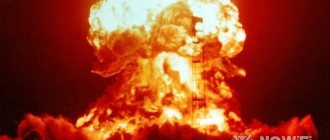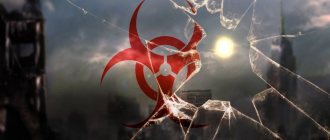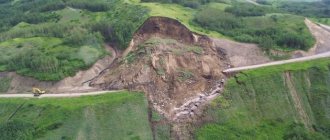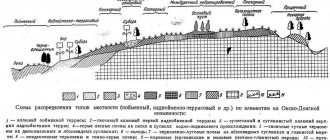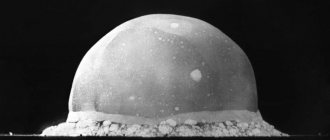Nuclear weapons, their combat properties and damaging factors
Nuclear weapon —
explosive weapons of mass destruction based on the use of intranuclear energy. This is one of the most destructive means of warfare. It includes various nuclear munitions (warheads of missiles and torpedoes, aircraft and depth charges, artillery shells and mines equipped with nuclear explosive devices), means of controlling them and means of delivery to the target (carriers).
Nuclear explosions can be carried out on the surface of the earth (water), underground (water) and in the air. In this regard, nuclear explosions are divided into types shown in Diagram 67.
Damaging factors of a nuclear explosion —
shock wave, light radiation, penetrating radiation, radioactive contamination and electromagnetic pulse (diagram 68).
The shock wave of a nuclear explosion is one of the main damaging factors. Depending on the environment in which it operates, it is called, respectively, an air wave, a shock wave (in water), and a seismic explosion wave (in soil). The shock wave is capable of injuring people, destroying various structures (Fig. 28), equipment and other objects at considerable distances from the explosion site.
The impact of a shock wave on people can be direct and indirect. With direct impact, the cause of injury is an instant increase in air pressure, which is perceived as a sharp blow, leading to fractures, damage to internal organs, and rupture of blood vessels. With indirect exposure, people are struck by flying debris, stones, broken glass and other objects.
The main way to protect people and equipment from a shock wave (Fig. 29) is isolation from its action in natural and artificial shelters and shelters (ditches, ravines, hollows, crevices, trenches, ditches, cellars, protective structures).
Light radiation is a stream of radiant energy that includes ultraviolet, visible and infrared rays. Its source is a luminous area formed by hot air and explosion products.
Light radiation spreads almost instantly and lasts, depending on the power of the nuclear explosion, up to 20 s. It can cause skin burns, damage to vision, and fire of flammable materials and objects.
The damaging effect of light radiation decreases with increasing distance from the center of the explosion. The dependence of the approximate radii of damage to people by light radiation, km, on the power of nuclear charges (with a visibility range of 25 km) is given below:
TNT equivalents………. 1 thousand tons 20 thousand tons 1 million tons 5 million tons 10 million tons
The radius of destruction of people,
causing them burns:
third degree…………. 0.6 2.4 12.8 24.0 32.2
second degree………….. 0.8 2.9 14.4 28.8 43.2
first degree………….. 1.1 4.2 22.4 36.4 51.3
Light radiation does not penetrate through opaque materials. Therefore, any barrier (wall, covering, building, tarpaulin, trees) that can create shadow protects from light and prevents burns (Fig. 30). Light radiation is significantly weakened in dusty (smoky) air, fog, rain and snowfall.
Penetrating radiation is the combined emission of gamma rays and neutrons. The sources are nuclear reactions occurring in the ammunition at the time of explosion, and radioactive decay of fission fragments (products).
The time of action of penetrating radiation on ground objects (Fig. 31) is 15-25 s. It is determined by the time the explosion cloud rises to a height of 2-3 km, at which gamma-neutron radiation, absorbed by the air, practically does not reach the earth's surface.
Passing through living tissue, gamma radiation and neutrons ionize the molecules that make up cells and can cause radiation sickness. As radiation passes through materials in the environment, its intensity decreases.
Protection against penetrating radiation is mainly based on this. Protective engineering structures and special anti-radiation screens have the greatest effectiveness in weakening the effect of this damaging factor (Fig. 32). The use of various anti-radiation drugs weakens the effect of ionizing radiation on the human body.
Radioactive contamination of the area and airspace occurs as a result of the fallout of radioactive substances from the cloud of a nuclear explosion. Its sources are fission products of a nuclear charge, radioactive isotopes formed as a result of the action of neutrons on the ground, and the undivided part of the charge.
During a nuclear explosion, radioactive substances rise upward, forming a cloud. Under the influence of high-altitude winds, it moves over long distances, contaminating the area in the area of the explosion and forming a so-called trace along the way. The trace of the radioactive cloud is conventionally divided into four zones (Fig. 33):
• zone A - moderate infection; its area is 70-80% of the footprint area;
• zone B - severe infection; this zone accounts for approximately 10% of the footprint area;
• zone B - dangerous contamination; this zone occupies approximately 8-10% of the footprint area;
• zone G - extremely dangerous infection; it makes up approximately 2-3% of the footprint area.
Radiation levels at the outer boundaries of these zones 1 hour after the explosion are respectively 8, 80, 240 and 800 R/h, and after 10 hours - 0.5, 5, 15 and 50 R/h.
Radioactive substances pose the greatest danger in the first hours after deposition, since during this period their activity is greatest.
Engineering structures, buildings and equipment provide different levels of protection in radioactively contaminated areas, as evidenced by data on the radiation dose reduction factor Kosl,
given below:
Slots: two-story……………………………20
decontaminated open…….20 three-story…………………………….40
non-decontaminated open……3 multi-storey……………………………70
covered……………………………..40 Basements of houses:
Shelters…………………………………….1000 one-story……………………………40
Houses: two-story …………………………..100
wooden single-storey……………..3 multi-storey……………………………400
stone: Cars……………………………………2
one-story……………………………10
An electromagnetic pulse is a short-term (less than 1 s) electromagnetic field that occurs when a nuclear weapon explodes. The consequence may be the failure of individual elements of radio-electronic and electrical equipment. People can only be harmed if they come into contact with wire lines at the time of the explosion. Protection against electromagnetic pulse is achieved by shielding equipment, control lines and power supply.
During nuclear explosions in populated areas or near economic facilities, secondary damaging factors may arise. These include explosions (during the destruction of containers and units with natural gas), fires (during damage to electrical networks and containers with flammable liquids), flooding of the area (during the destruction of dams), contamination of the area, atmosphere and water bodies (during the destruction of chemical facilities and nuclear power plants ).
Nuclear weapons and their main damaging factors
Classification of weapons of mass destruction. (Nuclear, chemical, biological) their damaging factors
Weapons of mass destruction (WMD) is a definition that combines several different types of weapons, each of which can lead to mass death. Moreover, in this case, the term “mass” is interpreted very broadly: from several thousand to many millions of deaths. Currently, only nuclear, chemical and biological weapons are classified as WMD. However, science does not stand still: scientists from around the world are constantly developing new weapons of mass destruction, which in their deadly qualities may well surpass the existing ones.
The first large-scale use of weapons of mass destruction occurred during the First World War - on April 22, 1915, the Germans carried out the famous chlorine attack near Ypres. The “abilities” of the new weapon impressed the military so much that in just a few months the conflict turned into a real chemical war. The Russian army also used OV.
The benefit performance of another type of weapon of mass destruction - the nuclear bomb - turned out to be much louder. In August 1945, the Americans dropped similar munitions on the Japanese cities of Hiroshima and Nagasaki. As a result of these attacks, about 200 thousand people died... This event was included in all historical books, dictionaries and encyclopedias.
The third type of WMD, biological weapons, fortunately, has never been used on a large scale during military operations, although there have been attempts to use them on a limited basis.
The improvement of weapons of mass destruction continues today. New types of combat gases and pathogens are being developed, and more powerful and efficient means of delivering nuclear weapons are being created. It is possible that in the near future new types of weapons of mass destruction will emerge, the operation of which will be based on different physical principles. In parallel with the work on the development of weapons of mass destruction, various states are conducting serious research, the purpose of which is protection against weapons of mass destruction - new vaccines are synthesized, more effective personal protective equipment (PPE), etc. are being adopted.
What are weapons of mass destruction?
The current classification of weapons of mass destruction is quite simple; WMD is divided into three types:
nuclear (thermonuclear);
· chemical;
· biological.
In turn, nuclear weapons (NF) are divided into:
· Nuclear explosive devices that use exclusively the fission energy of plutonium or uranium nuclei.
· Thermonuclear explosive devices, in which the bulk of the energy arises as a result of nuclear fusion reactions.
Currently, the overwhelming majority of existing nuclear weapons charges operate on the basis of fusion reactions, that is, they are classified as thermonuclear weapons. It is also customary to divide nuclear weapons according to their power, from ultra-small (up to 1 Kt) to ultra-large (over 1 Mt). Separate mention should be made of nuclear weapons, in which one of the damaging factors significantly prevails over the others. For example, a cobalt bomb provides the maximum possible contamination of the area, and the main damaging factor of a neutron bomb is penetrating radiation.
The classification of chemical weapons is based on the physiological effects they have on the human body. This is the most important characteristic of weapons of mass destruction of this type. Taking this into account, combat gases are:
· Nervous action (sarin, soman, tabun and V-gases);
· Blistering action (mustard gas, lewisite);
· Generally toxic (cyanchloride, hydrocyanic acid);
· Asphyxiating effect (phosgene);
· Psychochemical action;
· Irritant (chloropicrin, adamsin).
Depending on the degree of impact of weapons of mass destruction, toxic substances are divided into lethal and those that temporarily incapacitate a person. Although, this division is somewhat arbitrary. There are also classifications of chemical agents based on their persistence and speed of impact on humans.
Biological or bacteriological weapons of mass destruction are classified according to the types of pathogenic organisms, as well as methods of their use.
Nuclear weapons and their main damaging factors
The most powerful type of WMD, without a doubt, is nuclear weapons. Almost immediately after its appearance, it turned into the most important strategic factor, which it remains to this day. The power of nuclear weapons is capable of demolishing huge cities and killing millions of people in a matter of seconds, and the radiation generated during the explosion can contaminate vast territories for many years. Currently, only a few states in the world have this weapon of mass destruction in their arsenals; the United States and Russia have the largest number of nuclear warheads.
The following are the main damaging factors of nuclear weapons:
· light radiation;
· shock wave;
· penetrating radiation;
· electromagnetic pulse;
· long-term contamination of the area with radiation.
Of the total energy of a nuclear explosion, 50% is spent on the shock wave, 35% goes on light radiation, 10% on radioactive contamination and 5% on penetrating radiation. This must be taken into account when creating shelters from the effects of this type of weapons of mass destruction.
The shock wave is the main damaging factor of nuclear weapons. It is a front of extremely compressed air, which spreads in all directions from the epicenter of the explosion at supersonic speed.
Light radiation is a stream of energy that instantly spreads after an explosion, but acts rather briefly. Radiation burns or ignites all flammable materials, causes burns, and affects the visual organs of people and animals. The intensity of light radiation decreases with distance from the epicenter of the explosion. You should also know that any opaque materials that provide a shadow are an obstacle to this damage factor.
Penetrating radiation is a stream of hard radiation, mainly consisting of neutrons and gamma rays. Its impact is also short-lived - 10-15 seconds after the explosion. However, this time may be enough to lose health and “catch” radiation sickness. Steel and concrete shield penetrating radiation well; earth and wood do this somewhat worse.
Another serious threat from nuclear weapons of mass destruction is radioactive contamination of the area. It occurs due to the products of the nuclear reaction, as well as the impact of the explosion on objects and materials that were at the epicenter. At the moment of a nuclear explosion, a cloud saturated with radioactive elements usually forms, which can be carried tens of kilometers by the wind. This damage factor poses the greatest danger in the first hours and days after the use of nuclear weapons, then it decreases somewhat.
Another damaging factor of nuclear weapons is the powerful electromagnetic pulse that occurs at the moment of the explosion. It disables radio-electronic equipment and disrupts the operation of communications.
